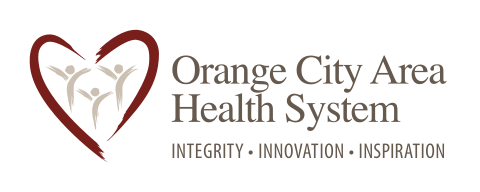Orange City Area Health System Recognized as a Top 100 Critical Access Hospital
Orange City Area Health System has been named a 2020 Top 100 Critical Access Hospital by The Chartis Center for Rural Health. This annual award honoring rural hospital performance is determined by the results of iVantage Health Analytics’ Hospital Strength INDEX.
“We are sincerely grateful for this recognition and what it signals to us in the execution of our mission,” remarked Marty Guthmiller, CEO of Orange City Area Health System. “Realizing that a health system never fully arrives at perfection, this is affirmation that we may be on the right path as we seek to serve our region in an appropriate and comprehensive manner.”
Based entirely on publicly available data, the INDEX is the industry’s most comprehensive and objective assessment of rural hospital performance. Utilizing 50 independent indicators, the INDEX assesses performance across eight pillars of performance that span market-, value- and finance-based categories. Hospitals recognized as a Top 100 facility had one of the 100 highest overall scores among all Critical Access Hospitals nationally.
“The Top 100 Critical Access Hospital award program reminds us that rural providers haven’t lost touch with their mission and are committed to delivering better quality, better outcomes, and better patient satisfaction. It’s a pleasure to be able to not only recognize this year’s recipients, but our larger group of top 100 alumni as we celebrate 10 years of The Hospital Strength INDEX,” said Michael Topchik, National Leader, The Chartis Center for Rural Health.
Guthmiller added, “Thank you to all of those individuals and families for the honor of caring for them and for the trust placed in Orange City Area Health System.”
Top 100 Hospital Resources:
The list of this year’s Top 100 Critical Access Hospitals as well as the INDEX methodology can be found at www.ivantageindex.com/top-performing-hospitals.
Our volunteers truly make a difference in the lives of patients, families, residents, and staff. You can learn more about volunteer opportunities here. Right now, we are in need of additional volunteers to serve the following vital roles throughout our health system. Please contact Brittany Janssen, Volunteer Services Manager, at 712-737-5349 if you are interested.
New! Patient Escort: We are looking for several volunteers for a brand new volunteer opportunity. Duties include directing and assisting patients between the lab/imaging areas and our newly-expanded medical office building on the west end of our main campus. Available shifts are Tuesdays, Wednesdays, and/or Thursdays from 8:30am-11:30am and 11:30am-3:30pm — and the first and third Fridays of each month from 8:30am-11am and 11am-2pm. This new position will begin in March.
Gift Garden: Greet and assist customers with friendly service. Operate the POS system. Keep the shop orderly and clean as time permits. Maintain awareness of the Gift Garden merchandise.
Information Desk: Greet patients at the main entrance as they come into the hospital. Provide directions, answer questions, and if able assist with wheelchairs.
Receptionist in Surgery Waiting: Be present at the surgery waiting area desk. Tasks include, notify surgery nurses when a patient arrives, keep track of patients family members while they are in surgery, notify family members when patient is done with surgery, show family back to the conference rooms to meet with the physician, and on occasion work on misc. projects.
[/et_pb_text][/et_pb_column][et_pb_column type=”1_2″ _builder_version=”4.2.2″][et_pb_gallery gallery_ids=”15386,15387,15388,15389,15391,15392,15393,15396″ fullwidth=”on” hover_icon=”%%40%%” _builder_version=”4.2.2″ custom_padding=”12px|12px|12px|12px|false|false” animation_style=”fade” auto=”on” box_shadow_style=”preset2″][/et_pb_gallery][/et_pb_column][/et_pb_row][/et_pb_section][et_pb_section fb_built=”1″ _builder_version=”4.2.2″][et_pb_row _builder_version=”4.2.2″ column_structure=”2_3,1_3″][et_pb_column _builder_version=”4.2.2″ type=”2_3″][et_pb_text _builder_version=”4.2.2″ link_option_url_new_window=”on” hover_enabled=”0″ link_option_url=”https://www.ochealthsystem.org/cardiac-rehabilitation/”]Cardiac Rehabilitation is a program that helps individuals who have heart disease improve their health by making changes to their lifestyle. Lifestyle changes that are encouraged and educated on include exercise training, education in heart-healthy living, and counseling to cope with emotions and stress.
The program is run by a team of healthcare providers who are specially trained to treat people with heart disease. It often takes place in a group setting, which offers support from others.
National Cardiac Rehabilitation Week was initiated by the American Association of Cardiovascular and Pulmonary Rehabilitation (AACVPR) to focus national attention on cardiac rehabilitation’s contribution to the improvement of the health and physical performance of individuals at risk for heart disease and/or those individuals diagnosed with heart disease or dysfunction.
Cardiac Rehabilitation Week coincides with both Valentine’s Day and American Heart Month in an effort to draw greater national attention to heart health. This year’s theme, “New Start Better Heart,” honors the patients, families, and healthcare professionals who are dedicated to giving cardiac rehabilitation patients a new start.
[/et_pb_text][/et_pb_column][et_pb_column _builder_version=”4.2.2″ type=”1_3″][et_pb_image _builder_version=”4.2.2″ src=”http://kpth130275site.wpengine.com/wp-content/uploads/2020/02/cardiac-rehabb-treadmill-woman-june-2019-scaled-1.jpg” box_shadow_style=”preset2″ custom_padding=”12px|12px|12px|12px|false|false” hover_enabled=”0″][/et_pb_image][/et_pb_column][/et_pb_row][/et_pb_section]
